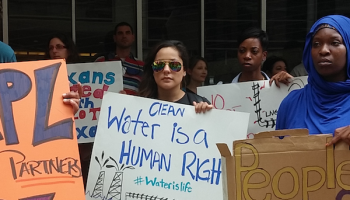About Lead
- Lead is a naturally occurring mineral that can be found in many environments and that is harmful, particularly to young children. There is no safe amount of lead in the body.
- Although banned or restricted, lead continues to be used in many everyday products such as batteries, solder, pipes, pottery, plastic, vinyl, roofing materials and some cosmetics.
- Lead is also often present in soil, on or inside houses built or painted before 1978, in certain plastics and vinyl, in glazes on imported pottery, in jewelry, in some Mexican spicy and tamarind candies, and imported home remedies.
About Lead Poisoning
- Childhood lead poisoning is a major environmental health problem, according to the United States Environmental Protection Agency.
- Lead poisoning is the most common environmental illness in California children.
- Lead poisoning is a medical condition caused by increased levels of lead in the blood.
- Children under six years old and fetuses are at greatest risk of harm from lead poisoning.
- Increased blood lead levels in children can result in learning and behavior problems that last a lifetime.
- Children with lead poisoning may not necessarily look or act sick. The only way to tell if a child has lead poisoning is with a blood lead test.
- Children can ingest lead through normal hand to mouth contact. This makes young children particularly vulnerable because they naturally explore the world by putting objects or their hands into their mouths.
- Lead poisoning is preventable and many steps have been taken in the U.S. to remove sources of lead, including banning lead in paint (1978), in food can solder (1995), and in gasoline (1996).
Lead in Children’s Products
- Many products for children and babies, such as cribs, high-chairs, lunchboxes, children’s jewelry and toys, manufactured both in the U.S. and abroad may still contain unsafe amounts of lead.
- In 2007, more than 25 million toys were recalled from store shelves because of lead contamination.
- In February 2009, new requirements took effect for the sale and resale of children’s products. Reselling recalled products is now a violation of federal law. The law further states that retailers cannot sell toys with banned levels of lead and must remove them from their stores, and that crafters cannot sell handmade toys with banned lead levels.
Tips and Resources for Parents
- Children’s products with unsafe levels of lead may still be in stores.
- It is important for parents to check the products they have at home, at their child’s school, day-care or babysitter’s against list of recalled and tested products.
- To help consumers find out if products have lead, The Ecology Center, a Michigan-based non-profit, has collected test data on nearly 5,000 products. This is the largest such database nationally and it can be accessed by visiting www.healthystuff.org
- You can also call 1-800-638-2772 or visit www.cpsc.gov to find out about which products have been recalled by the Consumer Product Safety Commission
Funding is provided by the Public Health Trust, a program of the Public Health Institute, through settlement of a complaint brought by the State of California.


